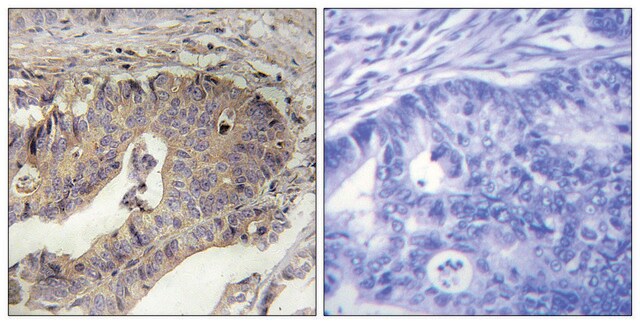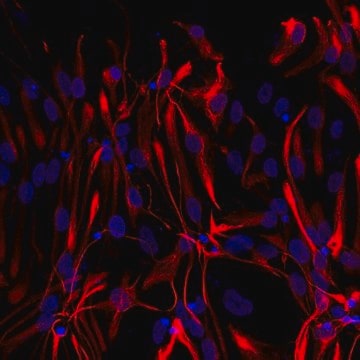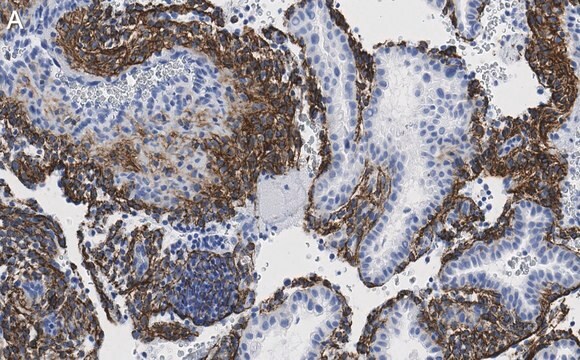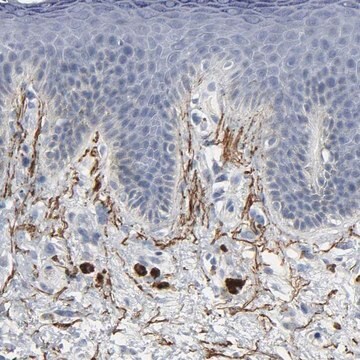MAB1919
Anti-Fibrillin Antibody, clone 11C1.3
clone 11C1.3, Chemicon®, from mouse
Synonim(y):
Anti-ACMICD, Anti-MASS, Anti-MFLS, Anti-OCTD, Anti-SSKS, Anty-FBN, Anty-GPHYSD2, Anty-MFS1, Anty-SGS, Anty-WMS, Anty-WMS2
About This Item
Polecane produkty
pochodzenie biologiczne
mouse
Poziom jakości
forma przeciwciała
purified antibody
rodzaj przeciwciała
primary antibodies
klon
11C1.3, monoclonal
reaktywność gatunkowa
bovine, pig, human
producent / nazwa handlowa
Chemicon®
metody
ELISA: suitable
immunofluorescence: suitable
immunohistochemistry: suitable (paraffin)
immunoprecipitation (IP): suitable
western blot: suitable
izotyp
IgG1κ
numer dostępu NCBI
numer dostępu UniProt
Warunki transportu
dry ice
docelowa modyfikacja potranslacyjna
unmodified
informacje o genach
human ... FBN1(2200)
Specyficzność
Immunogen
Zastosowanie
Immunohistochemistry: fresh frozen tissue: 1:200-1:500. Paraffin sections reactive after microwave citrate buffer antigen retrieval.
Immunoprecipitation: 5 microliters of antibody diluted in no more than 400 microliters of concentrated supernatants from bovine smooth muscle cells. We recommend either an anti-mouse IgG bead or a rabbit anti-mouse capture antibody followed by protein A.
ELISA
Optimal dilutions must be determined by the end user.
Cell Structure
ECM Proteins
Postać fizyczna
Przechowywanie i stabilność
Informacje prawne
Oświadczenie o zrzeczeniu się odpowiedzialności
Nie możesz znaleźć właściwego produktu?
Wypróbuj nasz Narzędzie selektora produktów.
polecane
Kod klasy składowania
12 - Non Combustible Liquids
Klasa zagrożenia wodnego (WGK)
nwg
Temperatura zapłonu (°F)
Not applicable
Temperatura zapłonu (°C)
Not applicable
Certyfikaty analizy (CoA)
Poszukaj Certyfikaty analizy (CoA), wpisując numer partii/serii produktów. Numery serii i partii można znaleźć na etykiecie produktu po słowach „seria” lub „partia”.
Masz już ten produkt?
Dokumenty związane z niedawno zakupionymi produktami zostały zamieszczone w Bibliotece dokumentów.
Nasz zespół naukowców ma doświadczenie we wszystkich obszarach badań, w tym w naukach przyrodniczych, materiałoznawstwie, syntezie chemicznej, chromatografii, analityce i wielu innych dziedzinach.
Skontaktuj się z zespołem ds. pomocy technicznej








